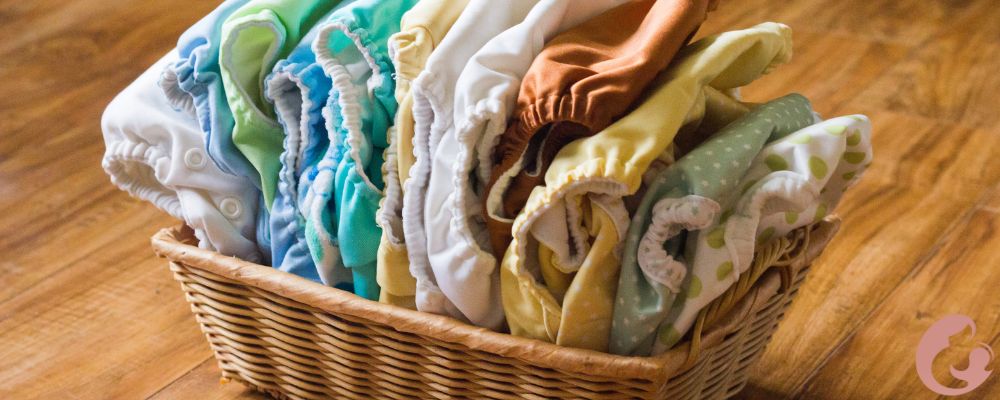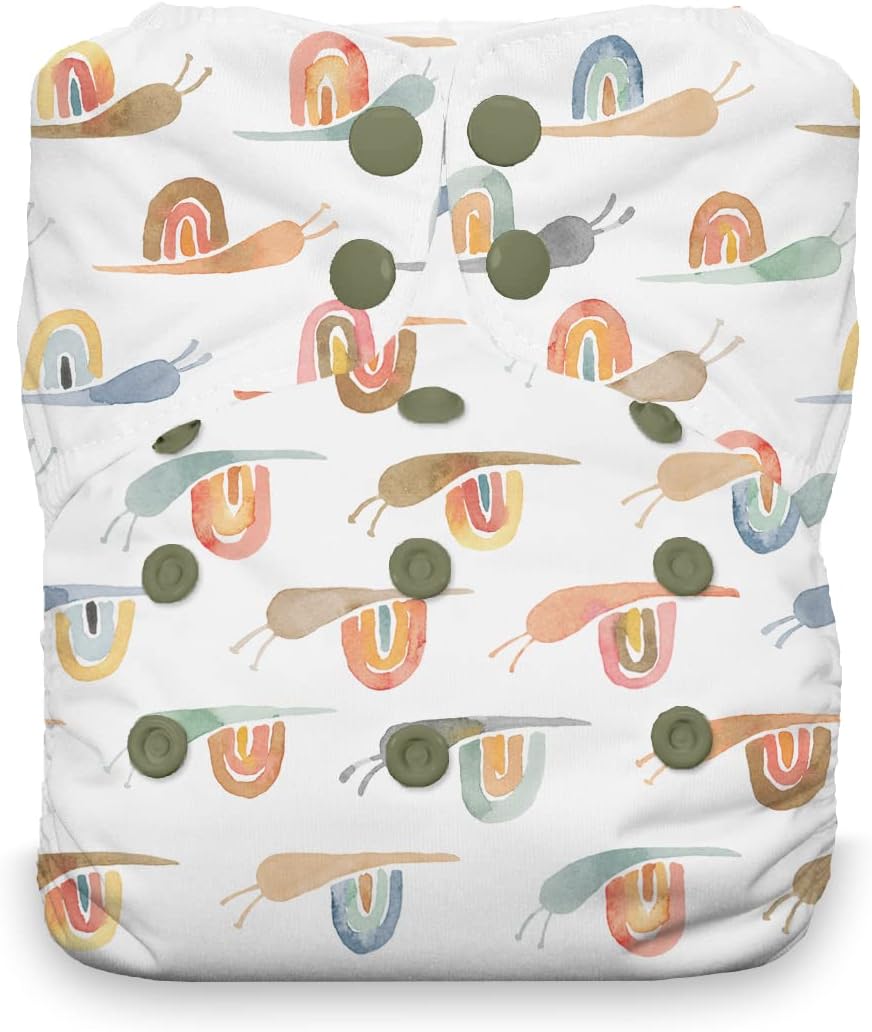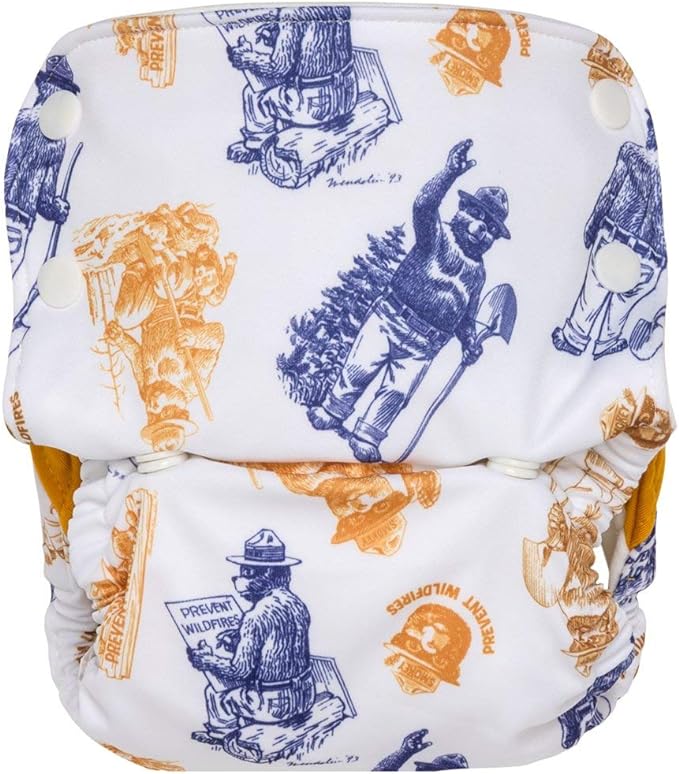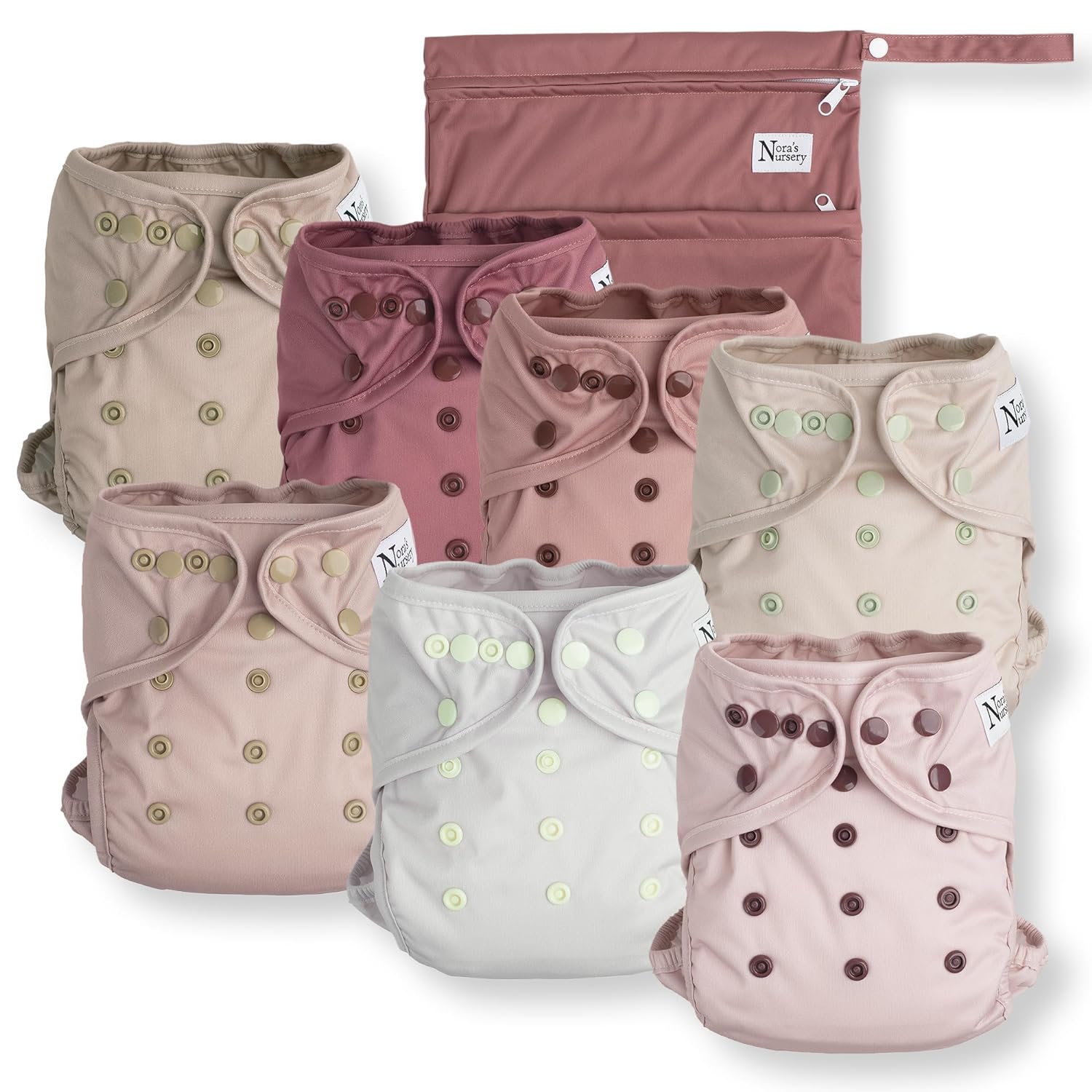Ever tallied up how much you’ve spent on disposable diapers? It’s enough to make you cry, right? I get it – those cute little cartoon characters are tempting, but the truth is, those disposables are adding up… in the trash, and in your wallet! Cloth diapers, on the other hand, are not only gentler on your baby’s skin, they’re also a financial lifesaver and a major win for Mother Earth. But, let’s be real, those old-school cloth diaper horror stories can be a little intimidating. Are they really worth the hassle? Spoiler alert: they absolutely are!
So, let’s dive into the world of cloth diapers and find the perfect fit for your little one. You might be surprised at how simple, stylish, and even fun cloth diapering can be!
What Kind of Cloth Diapers Are Best? Unraveling the Different Styles and Options
Alright, let’s get down to the nitty-gritty: what kind of cloth diapers are actually out there? There’s more than you might think! Each type has its own pros and cons, so let’s break it down:
- Pocket Diapers: These are like a little envelope – you stuff absorbent inserts inside a waterproof outer layer. They’re versatile, customizable, and super popular. Brands like BumGenius and Kawaii Baby are fan favorites.
- All-in-One Diapers: These are the easiest to use. The absorbent layers are sewn right into the waterproof cover, just like a disposable. Simply put it on, take it off, and toss it in the wash. Brands like Thirsties and BumGenius offer great AIOs.
- Prefold Diapers: These are the OG cloth diapers. They’re basically flat pieces of absorbent fabric (like a giant handkerchief) that you fold and fasten with a cover. They’re affordable and highly customizable, but can be a bit trickier to use for beginners.
- Fitted Diapers: These are like prefolds, but they’re shaped to fit your baby with snaps or Velcro. They’re super absorbent and a good choice for nighttime or heavy wetters. Brands like Thirsties and Green Mountain Diapers are known for their fitteds.
Which One Is Right for You?
The “best” cloth diaper really depends on your priorities and preferences. If you’re looking for convenience, all-in-ones are a great option. For customizable absorbency, pocket diapers are the way to go. If you’re on a budget, prefolds and fitteds are the most affordable.
Do Doctors Recommend Cloth Diapers?
While most doctors don’t actively recommend cloth diapers, they generally see no harm in using them as long as they’re properly cleaned and cared for. In fact, some studies suggest that cloth diapers might even be beneficial for babies with sensitive skin.
Still not sure which type of cloth diaper is best for your little one? Stay tuned for our in-depth reviews of the top-rated cloth diapers on the market!
Cloth Diapering 101: Everything You Need to Know Before Making the Switch
Think cloth diapering means endless piles of laundry and complicated folding techniques? Think again! While there is definitely a learning curve, cloth diapering isn’t nearly as daunting as it might seem. Let’s tackle some of those burning questions you might have before diving into the world of reusable diapers.
What Age Should You Start Cloth Diapers?
You can start using cloth diapers right from day one! Many brands offer newborn-sized cloth diapers that are specifically designed for tiny bottoms. Of course, newborns go through diapers like crazy, so you might want to start with a smaller stash and gradually add more as your baby grows.
How Often Should I Change Cloth Diapers?
Just like with disposables, you should change your baby’s cloth diaper whenever it’s wet or soiled. Newborns typically need a change every 2-3 hours, while older babies can go a bit longer between changes. The good news is that cloth diapers are super absorbent, so you might even find yourself changing less often than you did with disposables!
What Is a Major Disadvantage of Using Cloth Diapers?
The biggest drawback of cloth diapers is the upfront cost. Building a good stash of diapers can be pricey, but it’s an investment that will pay off in the long run. You’ll also need to factor in the cost of washing and drying your diapers, but even with those expenses, cloth diapers are still more affordable than disposables over time.
Do You Rinse Pee Out of Cloth Diapers?
For most cloth diapers, you don’t need to rinse pee out of them before washing. Simply toss the dirty diaper in a dry pail or wet bag until wash day. If your baby has solid poop, you’ll need to shake or spray it off into the toilet before storing the diaper.
How Often Do You Have to Strip Cloth Diapers?
Stripping is a deep cleaning process that removes buildup from diapers, but it’s not something you need to do very often. Typically, you only need to strip your diapers every few months, or if you notice they’re not absorbing as well as they used to.
Do Cloth Diapers Speed Up Potty Training?
While there’s no definitive scientific proof, many parents report that their cloth diapered babies potty train earlier than babies who use disposables. This is likely because cloth diapers allow babies to feel wetness more readily, which can help them make the connection between peeing and needing to go potty.
Ready to ditch the disposables and embrace a more eco-conscious, budget-friendly, and baby-friendly diapering option? Stay tuned for our reviews of the best cloth diapers for every need and budget!
Top-Rated Cloth Diapers for Every Budget and Need: Our Honest Reviews
Think all cloth diapers are created equal? Think again! Just like with anything baby-related, there’s a whole world of options out there. To make your cloth diapering journey a little less overwhelming, we’ve put together our top picks for the best cloth diapers in 2024. We’ve got something for everyone, whether you’re a newbie looking for an affordable starter kit or a seasoned pro in search of the ultimate nighttime diaper. Let’s dive in!
BumGenius Freetime All-in-One Diaper:
- Rating: 4.5 out of 5 stars
- Pros: The BumGenius Freetime is a fan favourite for its simplicity and effectiveness. It’s a true all-in-one, meaning there are no separate parts to fuss with – just put it on your baby and go! The microfiber inserts are sewn right into the cover, making it a breeze to use, especially for beginners. It also features a trim fit and comes in a variety of adorable prints.
- Cons: Some parents find that the Freetime can take a while to dry, especially if you don’t have a dryer. It’s also not as customizable as a pocket diaper, where you can adjust the absorbency with different inserts.
- Best for Daytime use, babies with average to heavy wetters, and parents who want convenience.
- Style: All-in-One (AIO)
- Material: Inner: Microfleece stay-dry layer; Outer: Waterproof PUL
- Weight range: Newborn (6-12 lbs): 6 ounces; One-size (8-35+ lbs): 9 ounces
- Price Range: $20-$25 per diaper
- Rating Categories:
- Absorbency: 4/5
- Fit/Leakage: 4.5/5
- Comfort: 4.5/5
- Ease of Use: 5/5
- Style: 4.5/5
Bottom Line: If you’re looking for a simple, reliable, and fuss-free cloth diaper, the BumGenius Freetime is a great choice.
Thirsties Natural All-in-One Diaper:
- Rating:7 out of 5 stars
- Pros: Made with certified organic cotton, this diaper is super soft and gentle on your baby’s delicate skin. It boasts excellent absorbency and can even be used overnight for most babies. Thirsties offers a one-size-fits-most option that can be adjusted to fit your baby from birth to potty training.
- Cons: While the organic materials are a plus, they do come with a higher price tag than some other options. Some parents also find the diaper to be a bit bulky, especially for newborns.
- Best for: Nighttime use, babies with sensitive skin, parents who prefer natural materials.
- Style: All-in-One (AIO)
- Material: Inner: Organic cotton; Outer: Waterproof PUL
- Weight range: One-size (8-35+ lbs): 10 ounces
- Price Range: $25-$30 per diaper
- Rating Categories:
- Absorbency: 5/5
- Fit/Leakage: 4/5
- Comfort: 5/5
- Ease of Use: 4.5/5
- Style: 4/5
- Bottom Line: If you’re willing to splurge on a premium cloth diaper made with natural materials, the Thirsties Natural AIO is a fantastic choice.
AlvaBaby Pocket Diaper:
- Rating: 4 out of 5 stars
- Pros: These diapers are known for their affordability, making them a popular choice for budget-conscious parents. They come with two microfiber inserts, allowing you to customize the absorbency for daytime or nighttime use. They also offer a wide variety of fun and colourful prints.
- Cons: Some parents find the fit to be less trim than other pocket diapers, and the microfiber inserts can take a while to dry.
- Best for: Budget-minded parents, average to heavy wetters, parents who like to customize absorbency.
- Style: Pocket
- Material: Inner: Microfleece stay-dry layer; Outer: Waterproof PUL; Inserts: Microfiber
- Weight range: One-size (8-35+ lbs): 8 ounces
- Price Range: $5-$10 per diaper
- Rating Categories:
- Absorbency: 3.5/5
- Fit/Leakage: 4/5
- Comfort: 4/5
- Ease of Use: 4.5/5
- Style: 4.5/5
Bottom Line: If you’re looking for an affordable and customizable cloth diaper, the AlvaBaby Pocket Diaper is a solid option.
GroVia Hybrid Shell System:
- Rating:2 out of 5 stars
- Pros: This versatile system allows you to use either disposable or reusable inserts, offering the best of both worlds. The shells are quick drying, and the system is designed to grow with your baby from newborn to toddler.
- Cons: The system can be a bit more complex to use than other options, as you need to snap or tuck the inserts into the shell. It also requires a separate cover.
- Best for: Parents who want flexibility, babies who need frequent diaper changes.
- Style: Hybrid
- Material: Shell: Waterproof PUL; Inserts: Disposable or reusable (various materials available)
- Weight range: Shell: Newborn (6-12 lbs) and One-Size (10-35+ lbs) – 4 ounces
- Price Range: Shells: $15-$20 each; Inserts: Varies depending on type
- Rating Categories:
- Absorbency: Varies depending on insert
- Fit/Leakage: 4/5
- Comfort: Varies depending on insert
- Ease of Use: 3.5/5
- Style: 4/5
- Bottom Line: If you’re looking for a flexible system that allows you to use disposable or reusable inserts, the GroVia Hybrid Shell System is worth considering.
Nora’s Nursery Prefold Diaper:
- Rating:8 out of 5 stars
- Pros: Prefold diapers are the most economical option for cloth diapering. They’re highly customizable and can be folded in various ways to fit your baby’s shape and size. They’re also made from natural materials like cotton, which is gentle on sensitive skin.
- Cons: Prefolds require folding and a separate cover, which can be a bit more time-consuming than using an all-in-one or pocket diaper. They may also be less absorbent than other options, especially for older babies or heavy wetters.
- Best for: Budget-minded parents, parents who prefer natural materials, and experienced cloth diaper users.
- Style: Prefold
- Material: Cotton
- Weight Range: Varies depending on size and folds.
- Price Range: $1-$3 per diaper
- Rating Categories:
- Absorbency: 3/5
- Fit/Leakage: 4/5 (with a good cover)
- Comfort: 4.5/5
- Ease of Use: 3/5
- Style: N/A
- Bottom Line: If you’re looking for the most affordable and customizable cloth diapering option, prefold diapers are a great choice.
The Cloth Diapering Lifestyle: Busting Myths and Saving Money
Think cloth diapering is all about crunchy granola vibes and sacrificing convenience? Not anymore! Modern cloth diapering is about smart choices that benefit your baby, your wallet, and the planet. Let’s tackle some common misconceptions and show you how much money you can really save by making the switch.
Myth: Cloth Diapering is Gross!
Truth: With today’s materials and washing machines, cloth diapers are no messier than disposables. The liners whisk away moisture, keeping your baby’s skin dry, and most diapers have a handy pocket for easy poop removal. Plus, there’s no need to rinse unless your baby does a number two!
Myth: Cloth Diapers Cause Diaper Rash.
Truth: Cloth diapers are actually less likely to cause diaper rash than disposables! The natural fibers used in cloth diapers are breathable and gentle on baby’s skin. Disposable diapers contain chemicals and fragrances that can irritate sensitive skin.
Myth: Cloth Diapering is Way Too Much Work!
Truth: It’s true that cloth diapering requires more effort than simply tossing a disposable in the trash. But it’s not as time-consuming as you might think. Most parents find that adding a load of diaper laundry to their routine is totally manageable. Plus, the savings you’ll see on disposable diapers will make it all worthwhile!
Does Cloth Diapering Save Money? Let’s Do the Math!
The average family spends a whopping $2,000 or more on disposable diapers per child. Yikes! With cloth diapers, you’ll spend an initial investment on a stash of diapers, but you’ll reuse them for years, potentially even for multiple children. Plus, you’ll save on garbage bags and the energy it takes to produce and transport disposable diapers. Over time, those savings add up big time!
FAQ: Your Burning Cloth Diaper Questions Answered
Let’s be honest, cloth diapering can raise a lot of questions. Here are answers to some of the most common queries we hear from parents:
- What Percentage of Moms Use Cloth Diapers? While it’s difficult to get an exact number, the cloth diaper community is growing rapidly! More and more parents are discovering the benefits of cloth diapering and making the switch.
- How Long Can Cloth Diapers Sit Before Washing? Ideally, you should wash your dirty diapers every 2-3 days. But if you need to let them sit a little longer, storing them in a dry pail or wet bag will prevent bacteria growth and odors.
- Why are American Kids Potty Trained So Late? There are many theories about this, but some experts believe that disposable diapers, which are highly absorbent and keep babies feeling dry, may contribute to delayed potty training. Cloth diapers, on the other hand, allow babies to feel wetness, which can help them make the connection between peeing and needing to use the potty.
- Do Babies Feel Wet in Cloth Diapers? While modern cloth diapers are designed to wick moisture away from your baby’s skin, they don’t completely eliminate the sensation of wetness. This is actually a good thing, as it can help with potty training!
Got more questions? Don’t hesitate to ask! We’re always happy to chat about all things cloth diapering.
Conclusion: Embrace the Fluff! It’s Time to Make the Switch
Think cloth diapers aren’t for you? Maybe you’re worried about the laundry or the initial cost. But let’s recap why making the switch to reusable diapers is worth considering:
- Save Money: Seriously, you could be saving thousands of dollars over your baby’s diapering years! Think of all the fun things you could do with that extra cash.
- Save the Planet: Disposable diapers take hundreds of years to decompose in landfills. By choosing cloth, you’re making a positive impact on the environment.
- Happy Baby, Happy You: Cloth diapers are gentler on your baby’s sensitive skin, reducing the risk of rashes and irritation. Plus, they’re just so darn cute!
Ready to Take the Plunge?
Don’t feel like you need to go all in right away. Start small by incorporating a few cloth diapers into your routine. See how it feels, how your baby reacts, and how manageable the laundry is. You might be surprised at how easy and rewarding it can be.
Share Your Fluff Love!
Already a cloth diaper convert? We want to hear from you! Share your experiences, tips, and favorite cloth diaper brands in the comments below. Let’s build a community of parents who are passionate about making a difference for their babies and the planet.
Remember, every little bit counts. By choosing cloth diapers, you’re not only saving money and protecting the environment, you’re also investing in your baby’s comfort and health. So go ahead, embrace the fluff, and join the cloth diaper revolution! If you would like to read an article about the Cloth Diaper Cleaning Guide please click here.











[…] Cloth Diapers: If you’re really committed to reducing waste, cloth diapers are the way to go. There are tons of great brands out there with adorable patterns and modern designs. […]